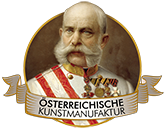Jazeps Grosvalds, a prominent figure of Latvian Expressionism, left an indelible mark on the development of modern art in Latvia at the beginning of the 20th century. His works are characterized by intense coloration and dynamic brushwork, which powerfully underscore the emotional content of his subjects. Grosvalds experimented with various techniques and materials, with oil on canvas being his preferred medium. Particularly striking is his handling of light and shadow, which often dissolves the pictorial space into vibrant fields of color, immersing the viewer in a dense, atmospheric scene. His portraits and figure paintings are marked by an expressive simplification of forms, enhancing the psychological expression of his subjects.
Grosvalds' artistic development was significantly influenced by his travels to Paris and Munich, where he engaged with the currents of the European avant-garde. His works reflect an engagement with Fauvism and German Expressionism, yet he always maintained a distinctive visual language. In addition to painting, Grosvalds also worked with drawings and watercolors, employing quick, assured lines and a reduced color palette. His themes range from urban scenes and soldier portraits to depictions of everyday life, always imbued with deep empathy for his subjects. The materiality of his works, the visible brushstrokes, and the impasto application of paint give his paintings an immediacy and vibrancy that continue to captivate viewers today.
×




.jpg)
.jpg)
.jpg)
.jpg)
.jpg)
.jpg)
.jpg)
.jpg)
.jpg)
.jpg)
.jpg)
.jpg)
.jpg)
.jpg)
.jpg)
.jpg)






